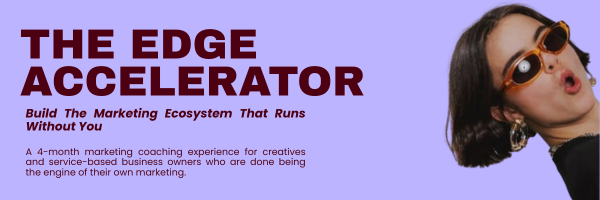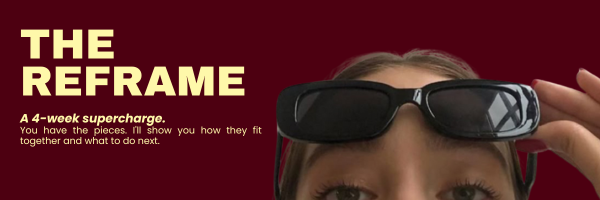What is a Marketing Ecosystem (And Why It’s the Secret to Sustainable Growth)
You’ve probably heard the term marketing ecosystem tossed around in strategy sessions, webinars, or LinkedIn posts. But what does it really mean, especially for a busy, creative or service-based business owner who’s past stuffing socials and crossing fingers for traction?
In short: Your marketing ecosystem is everything working together,your channels, your content, your systems, your audience journey, creating momentum rather than random bursts of noise.
Here’s why it matters a lot, and how you can start building one for sustainable growth.
1. The Definition: What a Marketing Ecosystem Actually Is
A marketing ecosystem is the collection of channels, technologies, tactics and teams you use to do the full scope of your marketing. It’s not just Instagram + email. It’s Instagram and website and lead magnets and nurture sequences and analytics and community. Each part influences the other. For service-based or creative business owners, this means you stop treating each post, each email, each campaign as a separate “hit” and you start treating marketing as a living system.
2. Why It’s a Game-Changer for Growth
Here are the key benefits of shifting your thinking from individual tactics to a full marketing ecosystem:
Better clarity and direction – When you map out your ecosystem, you see how everything connects and where the leaks are (wasted effort, misaligned channels.
Less wasted time and effort – Because the channels and tactics aren’t disjointed, you reduce redundant work and messaging that doesn’t land.
Stronger customer journey – A marketing ecosystem ensures your audience moves from awareness → trust → conversion → retention more smoothly.
Scalability and sustainability – When your system is built to work rather than constantly rebooted, growth becomes less about chaos and more about momentum.If you’re the kind of business owner who’s done the “post all the time” thing and still feels like you’re spinning wheels — this shift in mindset is your next chapter.
3. The 7 Core Components of Your Marketing Ecosystem
Let’s break it down into manageable pieces (because you don’t need a 37-point checklist at 10 pm, you need clarity). These are the high-leverage components I teach with in my frameworks.
Audience & Messaging – Know who your ideal client is, what they really care about, what they’re stuck with, and how you speak to them. Without this, the rest falls flat.
Offer Structure – Your lead magnets, low-ticket offers, core program/membership, upsells: how they stack and feed each other.
Content Channels & Platforms – Website/blog, email list, social media, possibly podcast or video — each chosen based on where your audience is and how they like to consume.
Lead Capture & Nurture System – How you turn “curious visitor” into “engaged lead” and ultimately “client.” Think in funnels, sequences, touchpoints.
Conversion & Sales Mechanism – Your discovery call, your application process, your sales page — aligned with the rest of the ecosystem so it flows naturally.
Retention & Community – The client journey doesn’t end at “yes.” Keeping them engaged, delivering value, building membership or follow-on offers is part of the ecosystem.
Measurement & Optimization – What’s working, what isn’t, where you invest more energy, where you pull back. An ecosystem means living data and adaptation.
When you view your marketing through this lens, you start spotting the gaps: “Oh — I have leads, but no nurture sequence.” Or: “My content is on social but not feeding my email list.” These are the weak spots in your ecosystem.
4. The 5 Mistakes That Break a Marketing Ecosystem (And How to Fix Them)
Because yes, you can set up a “system” and still have it collapse. Here are common pitfalls:
Mistake #1: Siloed channels
Example: Your social media team posts great stuff but never drives to your email list or website, while your email list is isolated. The ecosystem is fragmented.
Fix: Map your channels. Make each channel feed another part of the ecosystem.Mistake #2: No clear journey or path
The audience doesn’t know what to do next. They see you on Instagram, like you, then nothing. The system breaks. Emotive
Fix: Define clear touchpoints from “first meet” to “apply/buy”.Mistake #3: Tech overload / bloated stack
You’ve got ten tools that don’t talk to each other, data scattered, duplicate work.
Fix: Choose key tools and integrate. Simplify.Mistake #4: Lack of measurement / ownership
No one is tracking how each part of the ecosystem is performing, so you’re flying blind.
Fix: Assign KPIs to each part (lead capture rate, email open rate, conversion rate, retention rate) and review regularly.Mistake #5: Trying to launch “all the channels” at once
You launch social, podcast, blog, email, reels, paid ads… but none of them really connect or get traction.Fix: Start with 1-2 channels, build the connection points and the journey, then expand when you’ve got rhythm.
5. 5 Steps You Can Take Today to Start Building Your Marketing Ecosystem
Because action beats intention. Here’s your quick start list:
Map your current marketing ecosystem — list your channels (website, blog, social media, email, paid), list your offers, list your client journey from discovery to retention.
Identify one bottleneck — maybe your email list doesn’t convert, or your social traffic doesn’t land anywhere. Pick one weak link.
Clarify the lead journey — from “I don’t know you” → “I like you” → “I trust you” → “I hire you”. Make sure you have a clear path for each stage.
Choose one channel to strengthen — rather than launching five new scripts, hone the one you already have or use the one your audience uses most.
Define one measurement you’ll track — maybe it’s “email list growth rate” or “conversion rate from discovery call to client”. Monitor it monthly.
If you do these five today, you’ll already be ahead of most service-based businesses who are still doing marketing chaos.
6. Why This Matters for You (Yes, You)
You’re not just a small business owner who posts and hopes. You’re someone who wants fulfilment, clarity and traction. You want your marketing to be less stressful, less chaotic, and more strategic.
When you build a marketing ecosystem, you:
stop chasing trends and start building sustainable momentum
free up brain space (because your system is working, not you running all the time)
give your ideal clients a smooth experience (which means more trust, more referrals, more sales)
gain the freedom to choose what you do, because your marketing supports you (not the other way around)
7. Final Thought: Your Marketing Ecosystem Is Your Business’s Nervous System
Imagine your business as a body. Your arms, legs, heart, lungs all have to work together. If your arm and leg are working but your heart is weak, the body under-performs.
Your marketing ecosystem is your nervous system. If one channel is firing but the rest are disconnected, your business feels fuzzy, you feel stretched, and you compromise your growth.
But when the ecosystem hums, your content, your systems, your offers, your nurture journey then all you have to do is ride the momentum. You show up with your voice, your personality, your offer. The system works with you.
Ready to stop reacting and start orchestrating? Your marketing ecosystem is waiting.
Ready to Work With Me?
If your marketing feels more like a guessing game than a strategy, let’s fix that.
Inside The EDGE Accelerator™, we build your full marketing ecosystem, your message, your offers, your systems and connect it all so your business runs without you being the engine.
No busywork. Just structure, clarity, and a marketing system designed to grow with you.
👉 Work with me here and let’s start building your ecosystem.






